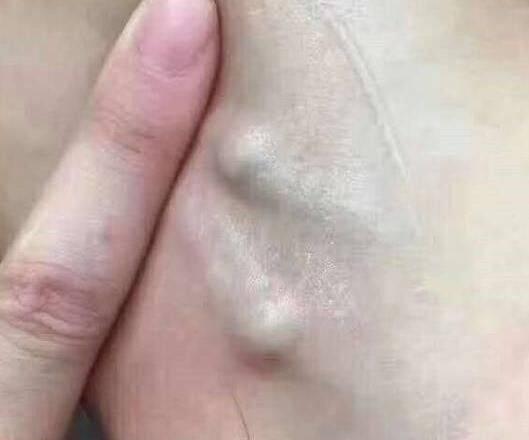
You’re in the shower, running a soapy washcloth over your skin, when your fingers brush against it—a small, tender lump under your arm. Your mind, conditioned by a lifetime of warnings, immediately jumps to one conclusion: swollen glands. And from there, it’s a short, anxious leap to worrying about infections or something more serious.
But before that worry takes root, it’s important to know that the most common lumps found in the armpit are not swollen lymph nodes at all. In the vast majority of cases, these lumps aren’t a sign of a systemic illness. They are angry, clogged sweat glands, and they’re telling you that your personal maintenance department is on strike.
Let’s be clear: any new, persistent lump should be evaluated by a doctor for peace of mind. But understanding the likely culprit can save you a great deal of unnecessary fear.
Meet the Culprit: The Hidradenitis Suppurativa (HS) Pimple-Gone-Rogue
What you’re most likely feeling is a flare-up of a common, but often misunderstood, skin condition. Think of it as a deep, rebellious pimple that forms in the special sweat glands found in areas like your armpits and groin. These glands, called apocrine glands, produce a thicker, milky sweat that interacts with the bacteria on your skin.
For many people, especially women and those with a family history, these glands can become easily irritated. The tiny hair follicles get clogged with dead skin cells and sweat, creating a blockage. Unlike a surface pimple, this blockage happens deep down. Bacteria get trapped, leading to inflammation, pain, and a red, tender lump that can feel like a marble under your skin. This is often the beginning stage of Hidradenitis Suppurativa.
Why It’s Not (Usually) a “Swollen Gland”
True swollen lymph nodes are your body’s reaction to a significant threat elsewhere, like a serious infection in your arm or hand, a systemic illness, or, in rarer cases, something more concerning. They are part of your immune system’s command center.
These lumps, on the other hand, are a local skin problem. They are a plumbing issue, not a sign that your body’s security team is on high alert.
Decoding the Message: What Your Body is Trying to Tell You
When these lumps appear, your body isn’t signaling a catastrophic failure. It’s sending a more practical, if uncomfortable, memo. It’s saying:
- “Your friction levels are too high.” Tight clothing, synthetic fabrics that don’t breathe, and repetitive chafing are major triggers.
- “Your razor is a menace.” Shaving creates micro-cuts and ingrown hairs, which are perfect entry points for bacteria to invade and inflame those already-sensitive glands.
- “Your stress is leaking out through your skin.” Stress hormones can directly increase inflammation throughout the body, making these glands more prone to flare-ups.
- “We need to talk about your diet.” For some, foods high in sugar and dairy can act as triggers, worsening the inflammatory environment.
What to Do When You Find a Lump
- Don’t Panic, but Do Pay Attention. Note its size, tenderness, and whether it moves freely. A harmless cyst or inflamed gland will often be somewhat mobile. A lump that is rock-hard, fixed in place, or rapidly growing warrants a prompt doctor’s visit.
- Apply Warmth. A warm, damp washcloth applied for 10-15 minutes several times a day can help soothe the inflammation and encourage the lump to come to a head and drain on its own.
- Wear Your “Weekend Clothes.” Opt for loose, breathable cotton tops to reduce friction and allow the area to air out.
- Give Shaving a Break. If you shave, avoid the area until the lump has completely resolved. Consider alternative hair removal methods long-term.
- See Your Doctor or a Dermatologist. If lumps are recurrent, painful, or you’re just unsure, a doctor can provide a proper diagnosis. They can offer treatments from simple antibiotic creams to more advanced medications that manage the condition at its root.
These lumps under your arms are a nuisance, a pain, and an inconvenience. But they are most often not a dire warning sign. They are your skin’s way of asking for a little more care, a little less friction, and a gentler approach. By listening to this message, you can calm the rebellion and restore peace to your personal ecosystem.